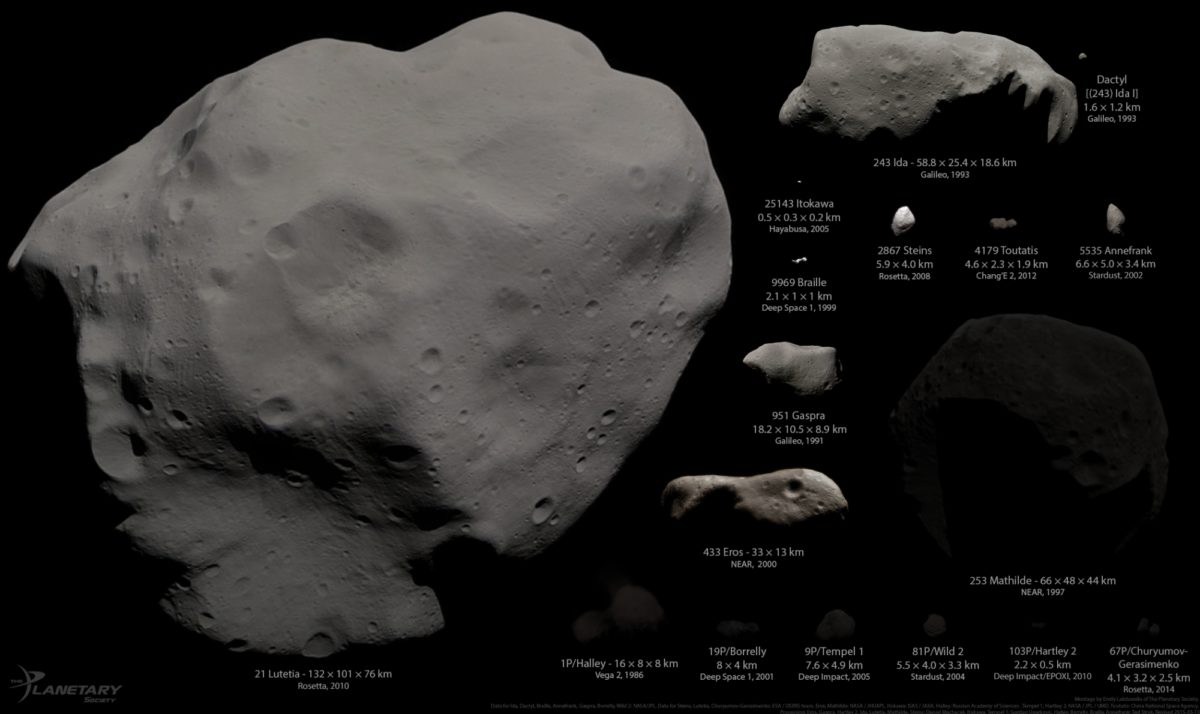Emily Lakdawalla • Nov 18, 2010
Asteroids and comets to scale, including Hartley 2
Just in time for today's Deep Impact press briefing, which you can watch on NASA TV in a few minutes: I've updated my montage of all the asteroids and comets that have been visited and photographed to include Hartley 2. This required no major rearrangement from the last update, since Hartley 2 is so tiny; you can see it grouped with the rest of the comets to the lower right of gigantic Lutetia, which dominates the scene.

The total of five comets and nine asteroid systems (including ten separate bodies) that have been examined up close by spacecraft are shown here to scale with each other (100 meters per pixel, in the "click to enlarge" version). Most of these were visited only briefly, in flyby missions, so we have only one point of view on each; only Eros and Itokawa were orbited and mapped completely.
This image is also available as a larger version at 20 meters per pixel; if you prefer, you can download a version without text. Both are 8600x6250 pixels, 9.4 M). People sometimes ask why I post them in PNG format instead of the more bandwidth-happy JPEG; it's because I know this will be downloaded, used, and reused, and I want to make it available in a lossless format.
Speaking of use, this montage is freely available to researchers and educators for use in presentations; in fact, the reason I composed it in the first place was because I was tired of seeing poor-quality montages in scientific presentations! So, have at it! If you would like to use it in print, please send me an email and please preserve the credit information I've listed for the data sources and processing work, as far as space allows. Lots of different spacecraft and institutions were involved in bringing back these precious pictures!
Let’s Go Beyond The Horizon
Every success in space exploration is the result of the community of space enthusiasts, like you, who believe it is important. You can help usher in the next great era of space exploration with your gift today.
Donate Today

 Explore Worlds
Explore Worlds Find Life
Find Life Defend Earth
Defend Earth

